The State Hermitage Museum, located in the heart of St. Petersburg, Russia, is one of the world’s largest and most prestigious art museums. Founded in 1764 by Empress Catherine the Great, it houses over three million artworks, spanning from prehistoric artifacts to masterpieces by Da Vinci, Rembrandt, and Van Gogh. The museum comprises six historic buildings, including the Winter Palace, which was once the official residence of Russian emperors. Visitors can explore grand halls, gilded interiors, and a vast collection that reflects the grandeur of Russian royalty and the richness of global art history.
Location
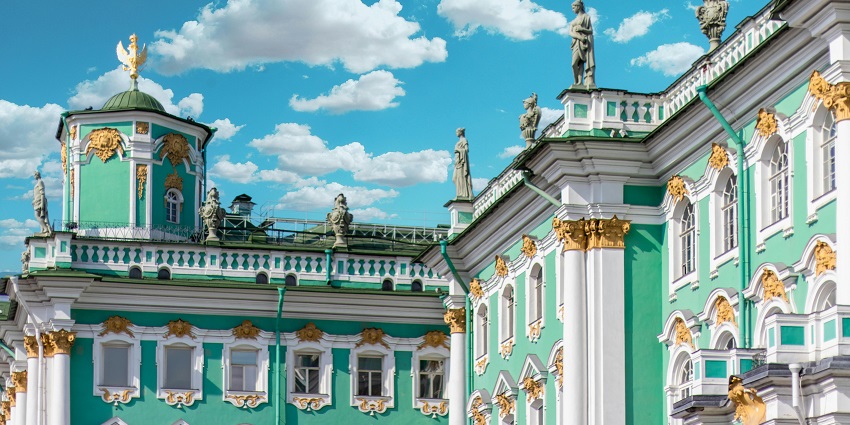
Photo: Maria Charizani / Pexels
The State Hermitage Museum is situated along the Neva River in St. Petersburg, Russia. Its main complex, including the Winter Palace, is positioned in the historic center of the city, making it easily accessible to tourists. The museum’s location near Palace Square offers breathtaking views of St. Petersburg’s architectural marvels. As one of the most visited attractions in Russia, the museum draws millions of visitors every year. The museum’s setting within a UNESCO-listed historic district makes it an essential stop for art lovers, history enthusiasts.
How To Reach

Photo: Jaimrsilva / Wikimedia Commons
Easily accessible via multiple transportation modes, reaching the museum is convenient for travelers from all over the world.
By Air: The nearest airport is Pulkovo Airport (LED), about 22 km from the museum. Taxis, buses, and metro services connect the airport to the city center.
By Rail: St. Petersburg’s Moskovsky Railway Station is well-connected to Moscow and other Russian cities. From the station, the metro or taxis provide quick access to the museum.
By Road: Visitors can use city buses, trolleybuses, or taxis. The nearest metro station is Admiralteyskaya, a short walk from the museum entrance.
Things To Do At The State Hermitage Museum
Step into the grandeur of the past and immerse yourself in centuries of artistic brilliance at the museum.
1. See The Peacock Clock
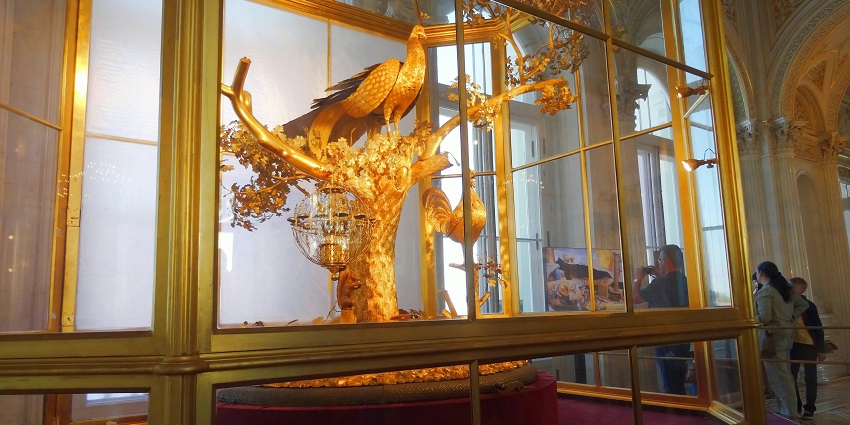
Photo: Je-str / Wikimedia Commons
Located in the Pavilion Hall of the museum, the Peacock Clock is a gilded 18th-century automaton by James Cox. This impressive timepiece has life-sized mechanical birds including an owl, peacock, and rooster. It was acquired by Catherine the Great in 1781. The clock puts on a spectacle with chimes, movements, and the peacock displaying its golden feathers. The museum turns on the clock once a week, on Wednesdays.
2. Visit The Treasure Gallery
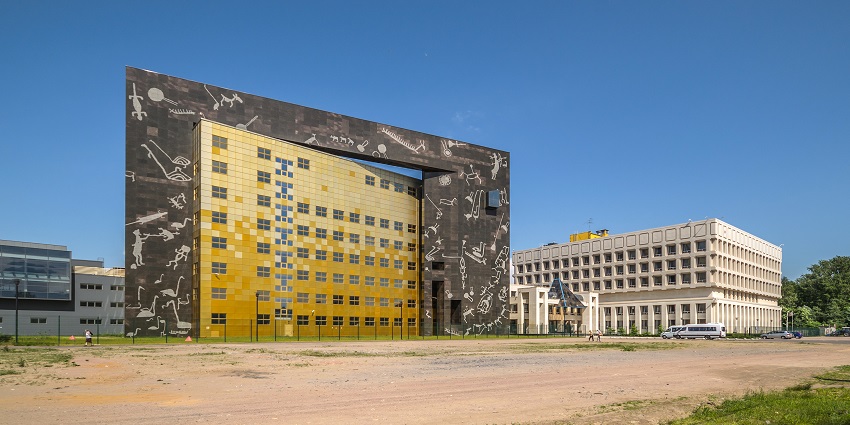
Photo: Florstein / Wikimedia Commons
The State Hermitage Museum houses one of the largest jewelry art collections in the world. It encompasses the Gold and Diamond Rooms and displays a remarkable collection of priceless artifacts. These heavily guarded galleries require a separate ticket and guided tour for entry. Visitors can marvel at ancient Scythian and Greek goldwork, as well as decorations from St. Petersburg’s court jewelers, including Carl Faberge. The Diamond Room reveals the evolution of jewelry from the third millennium B.C. to the 20th century.
3. Immerse Yourself In Italian Fine Art
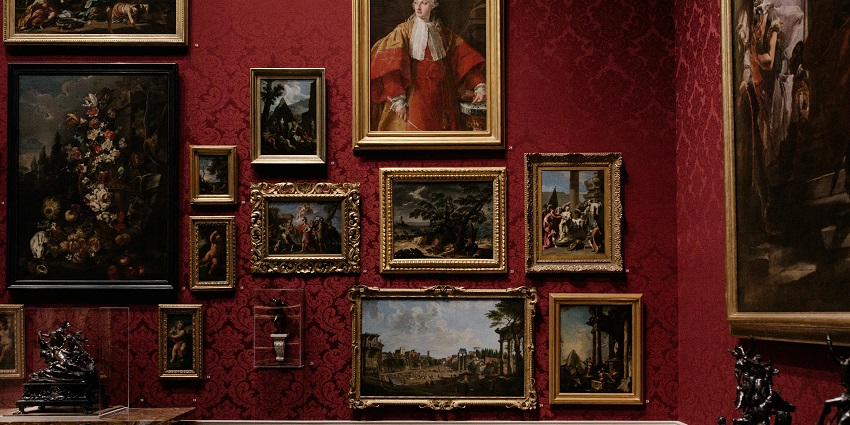
Photo: Andrew Neel / Unsplash / Image For Representation Only
The museum boasts a remarkable collection of Italian fine art from the 17th and 18th centuries, displayed in rooms with distinctive red walls. These spaces display Italian canvases from masters like Veronese, Giambattista Pittoni, Tintoretto, Velázquez, and Murillo. The collection includes Raphael’s Conestabile Madonna, a work painted around 1503 in his native town of Urbino, and is known for its pure and delicate depiction of the young mother set against a lyrical landscape. The Italian art collection occupies over thirty rooms and embraces art from the 13th to the 18th century.
4. Visit The Military Gallery
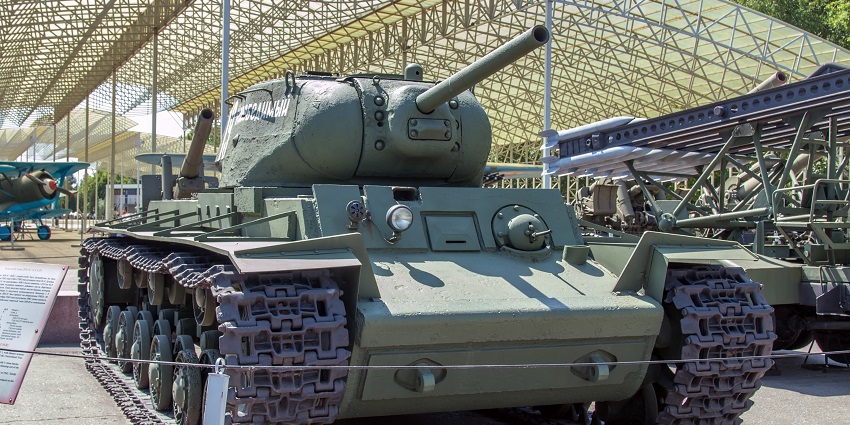
Photo: Mike1979 Russia / Wikimedia Commons / Image For Representation Only
The Military Gallery of the Winter Palace, part of the museum, is dedicated to the heroes of the Patriotic War of 1812. The gallery features 332 portraits of generals who participated in the war, painted by George Dawe and Russian artists Alexander Polyakov and Wilhelm August Golicke. Originally commissioned by the Russian Tsar in 1819, the gallery retains its original decoration. During the Soviet era, the collection expanded to include portraits of Palace Grenadiers, veterans who guarded the building.
Places To Visit Near The State Hermitage Museum
Discover more of St. Petersburg’s iconic landmarks and cultural treasures are just a short walk from the museum.
1. Maly Ermitazh
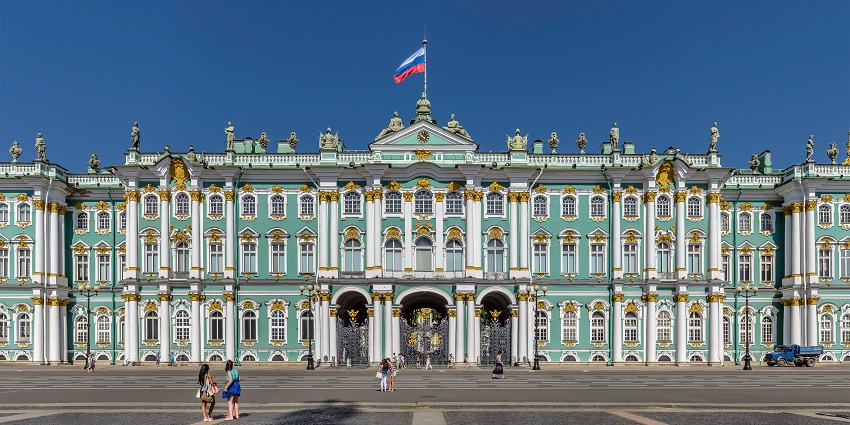
Photo: Florstein / Wikimedia Commons
The Small Hermitage, or Maly Ermitazh, is a neoclassical building that is part of the larger museum complex. Located just a short walk from the main museum, it was commissioned by Catherine the Great to house her expanding art collection. The Small Hermitage shows Western European decorative and applied art from the 12th to the 16th centuries. The Pavilion Hall features the golden Peacock Clock. As part of the Hermitage Museum, the Small Hermitage contributes to the museum’s extensive collection of over three million items.
Distance From Museum: 150 metres.
Entry Fee: 730 Roubles/INR 657
2. Grand Duke Vladimir Palace
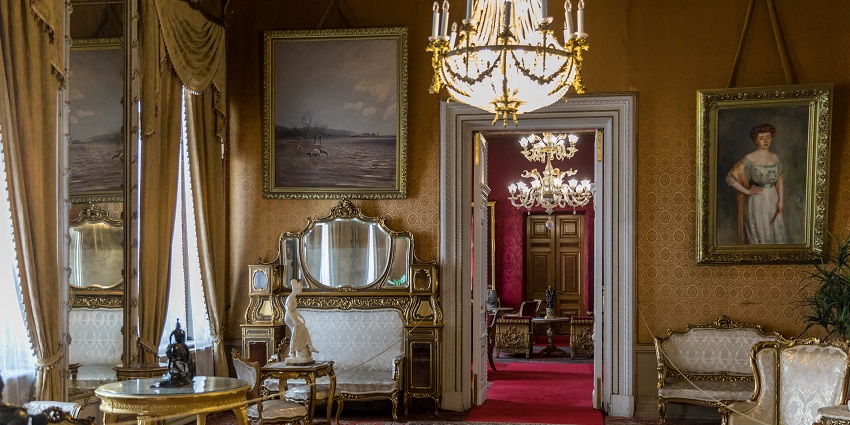
Photo: Ninara / Wikimedia Commons
The Grand Duke Vladimir Palace offers a glimpse into the world of 19th-century Russian nobility. Constructed between 1867 and 1872 for Grand Duke Vladimir Alexandrovich, the palace stands as one of the last imperial residences built in St. Petersburg. Designed by a team of architects led by Vasily Kenel, its somewhat austere facade contrasts sharply with its lavish interiors, showcasing a range of styles from neo-Gothic to Rococo. Preserved as the Maxim Gorky House of Scientists after the October Revolution, the palace retains authentic details and houses Vladimir’s porcelain collection.
Distance From Museum: 800 metres
3. The Alexander Column
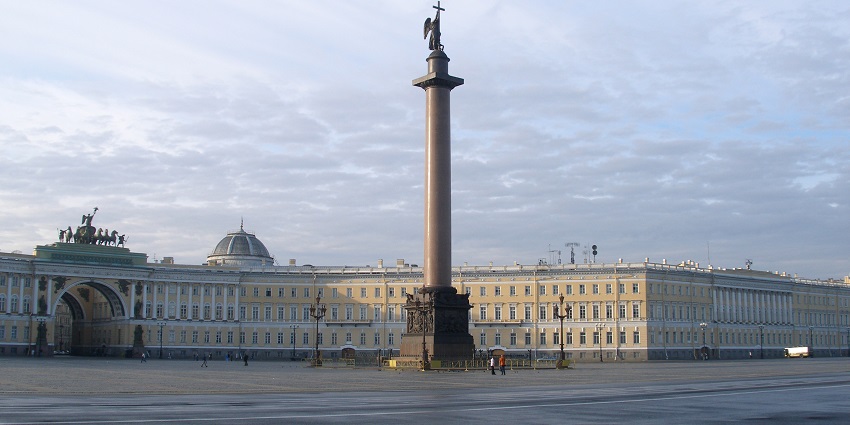
Photo: Vyacheslav Argenberg / Wikimedia Commons
The Alexander Column, a centerpiece of Palace Square, commemorates Russia’s triumph over Napoleon. Designed by Auguste de Montferrand, the monument stands at over 155 feet and weighs 600 tons. Topped with an angel holding a cross, the column is a single piece of red granite. Built between 1830 and 1834, it is an impressive feat of engineering, raised without modern cranes. The Alexander Column is surrounded by significant buildings, including the Winter Palace, which is now the main building of the museum.
Distance From Museum: Approximately 0.2 km
4. Palace Square
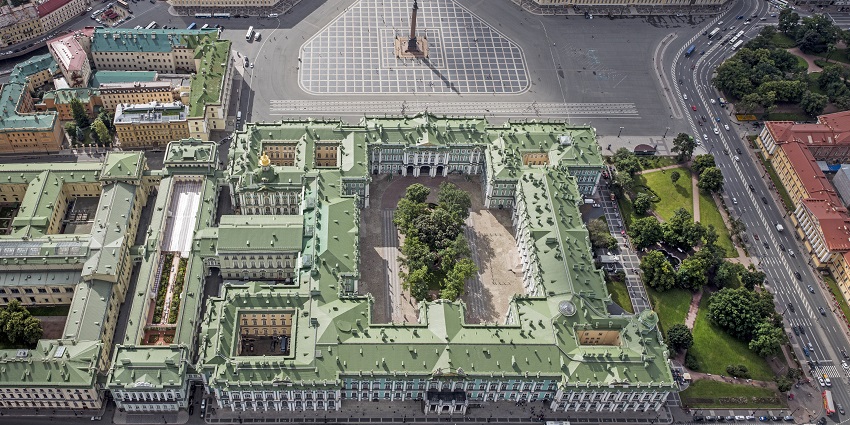
Photo: Godot13 / Wikimedia Commons
Palace Square, a central plaza in St. Petersburg, is closely linked to the museum, with the Winter Palace, a primary building of the Hermitage, fronting one side of the square. The square connects Nevsky Prospekt and Palace Bridge. The Alexander Column stands in the square’s center. Over the years, Palace Square has been the location for major historical events. The General Staff Building, known for its neoclassical style, is also located here. As an important plaza, it provides a space to stroll and view the surrounding monuments.
Distance From Museum: 120 metres.
Where To Stay
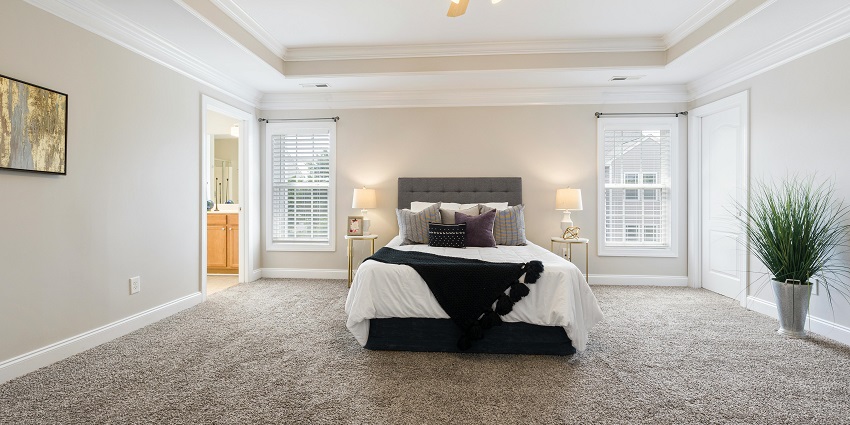
Photo: Curtis Adams / Pexels / Image For Representation Only
For accommodations near the State Hermitage Museum, consider a range of options. The Four Seasons Hotel Lion Palace offers luxury with opulent rooms. Angleterre Hotel provides comfort with great city views. Nevsky Forum Hotel is another option that offers rooms from $381. Budget travelers can explore options like Friends Loft, located 1.5 km from the Hermitage. These hotels near the museum ensure easy access to cultural sites, making it convenient to explore the city’s artistic and historical wonders.
Where To Eat
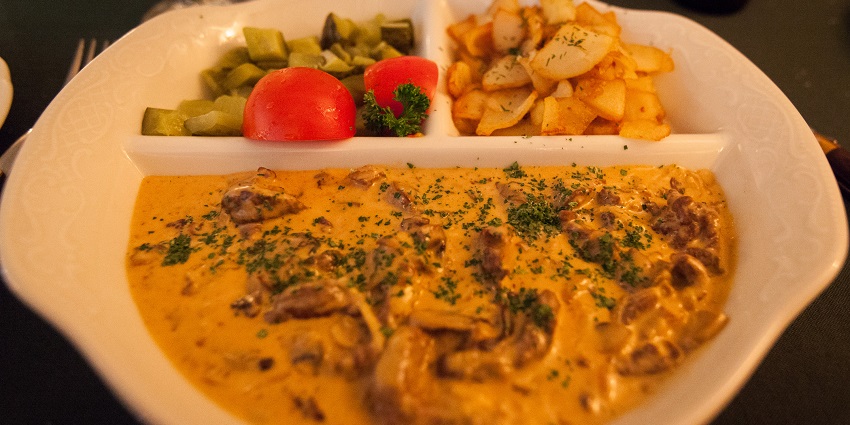
Photo: jimmyweee / Wikimedia Commons / Image For Representation Only
While the Hermitage Museum itself doesn’t house restaurants, the surrounding area of St. Petersburg offers diverse dining options. Bellevue Brasserie, atop the Kempinski Hotel, provides European cuisine and views. Gogol Restaurant offers traditional Russian delicacies in a 19th-century setting. Tsar Restaurant features imperial-style dining, including caviar and beef stroganoff. For a budget-friendly option, Pyshechnaya is famous for its Soviet-era donuts. Dining around the museum ensures a culinary experience that complements the grandeur of the visit.
Best Time To Visit
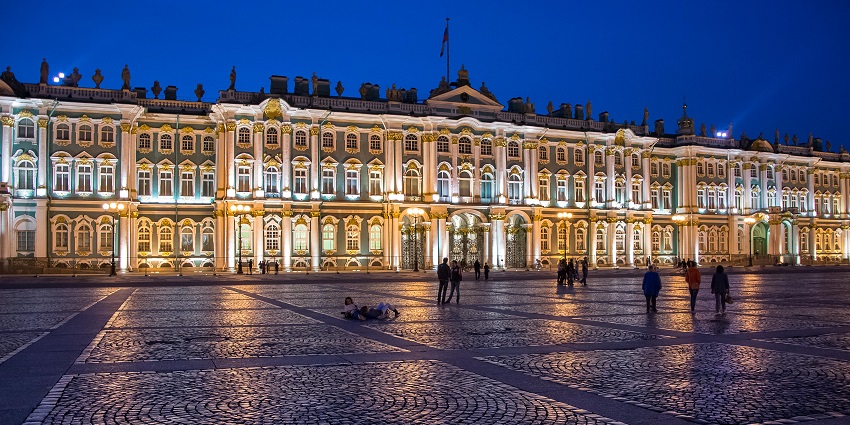
Photo: kuhnmi / Wikimedia Commons
The museum is open year-round, but the best time to visit depends on your preferences. Summer (June to August) is peak tourist season, with long daylight hours and the famous White Nights festival enhancing the experience. However, this period sees larger crowds. Spring (April to May) and autumn (September to October) offer pleasant weather and fewer visitors, making it ideal for exploring the museum at a relaxed pace. Winter (November to February) provides a magical, snow-covered cityscape and a quieter atmosphere for art lovers looking for an immersive experience.
Other Factors To Consider
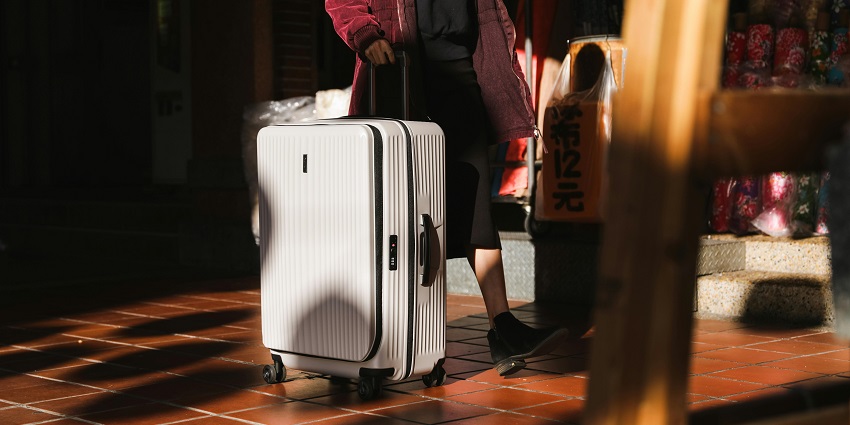
Photo: Eminent Luggage / Pexels / Image For Representation Only
Average Cost Of The Tip
The average cost of a trip to the State Hermitage Museum in St. Petersburg for one day can range from ₽2,000 to ₽4,000 (approximately ₹2,000 to ₹4,000). This includes the entrance fee of about ₽1,500 (₹1,500) and additional expenses for transportation, food, and souvenirs. If you plan to visit guided tours or special exhibitions, budget around ₽1,000 (₹1,000) extra for a more enriching experience.
Tips For Travellers
- The museum is closed on Mondays; you can plan accordingly.
- Free admission on the first Thursday of each month.
- Booking tickets online helps avoid long queues.
- Large bags are not allowed; lockers are available at the entrance.
- Photography is permitted in most areas, but flash and tripods are prohibited.
The State Hermitage Museum stands as a testament to Russia’s artistic heritage and the grandeur of its royal past. Housing an extraordinary collection of global masterpieces, it offers an unparalleled experience for history buffs, art lovers, and cultural explorers. Whether marveling at the majesty of the Winter Palace, admiring iconic paintings, or exploring ancient artifacts, visitors are bound to be captivated by its vast treasures. Plan your trip with TripXL for a smooth and enriching journey into the heart of Russian art and history.
Cover Photo: Wolfgang Moroder / Wikimedia Commons


 WhatsApp
WhatsApp
 Twitter
Twitter









